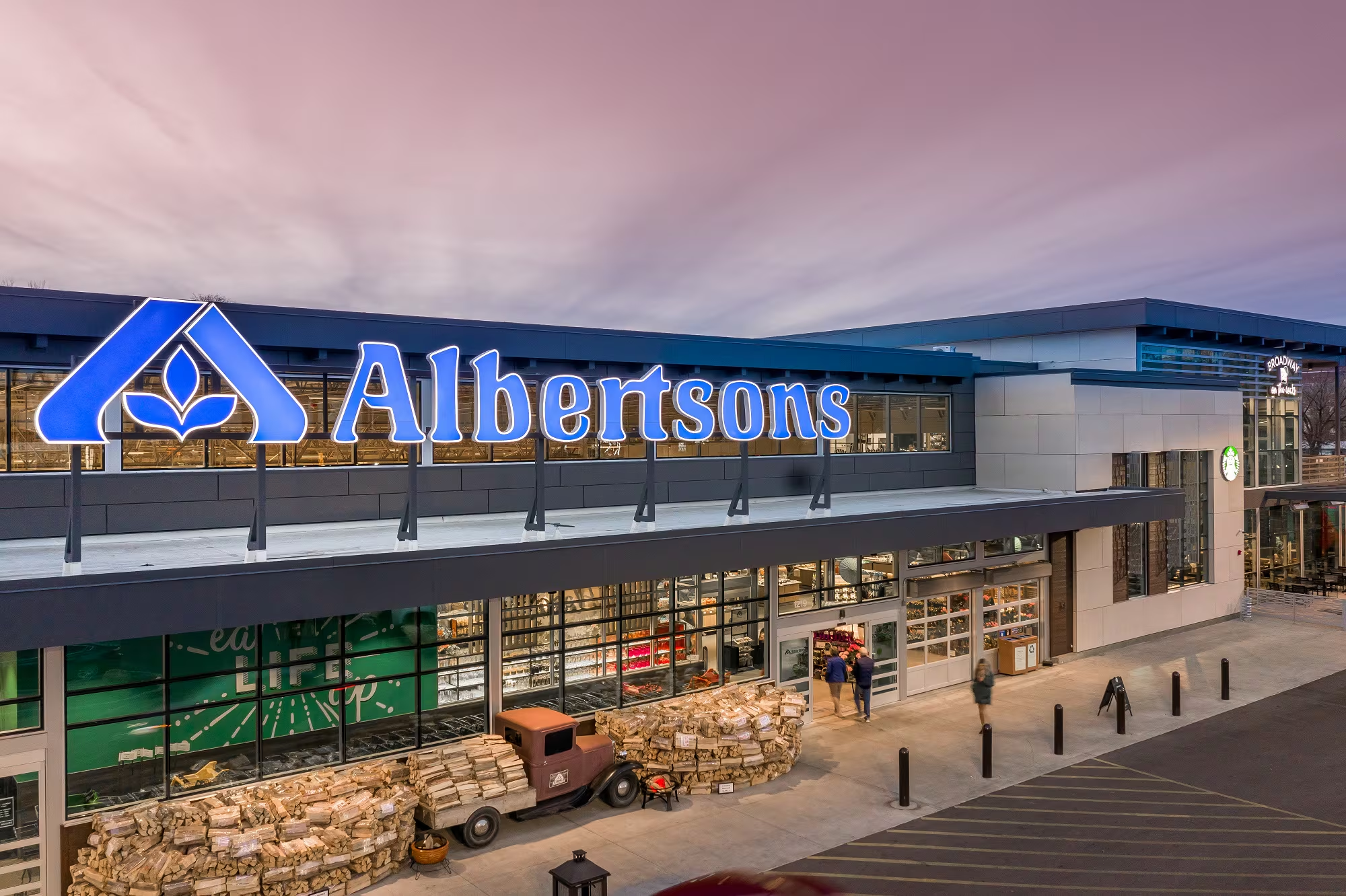Albertsons Companies reported a +2.8% comp-sales increase for its fiscal quarter (June 14th end) driven by pharmacy (GLP-1 drugs) and e-commerce (3P delivery+curbside). Advan estimates that traffic was up modestly at Safeway and Albertsons. Deconstructing all of these figures implies a -3.6% decline in store units-per-transaction (UPTs), assuming that they passed through the +2.3% food-at-home inflation (CPI) in the period. The decline in UPTs is the natural result of the strong GLP usage (fewer calories eaten) and increased frugality. The growth from GLPs is stronger / more than management expected. On the latter, we see something different in the data for this quarter; Safeway’s visitors are down, but frequency is up vs. previously being up / down. The increase had been driven by increased cross-shopping to cherry-pick deals. The strong increase in e-commerce (+25% and 210 bps of the comp) is also a factor in the decline in store visitors, but why the increase in frequency? Likely drivers are heightened paycheck-cycle behavior which reflects budgetary strains on households and some loss of budget-stretched households (the median household income at Safeway increased +2.5% YoY, reflecting fewer lower-income shoppers). Another driver is lost share to club and value; visitation to Costco-California in the period increased +3%, Sam’s-California (+6%), and Trader Joe’s-California (+6%). By contrast, Safeway-California was down -0.7%. Lastly, there was the strike in Denver impacting Safeway; Advan estimates that sales were down -10% in June this business.
In terms of Albertsons’ loyalty program (its app), growth was strong again with +1.7M new members added in the quarter to end at 47.3M. CEO Susen Morris said, “… We capitalized on simplification of our program and further enhanced the value the program offers. Members in the program today are engaging more frequently using more of our easy-to-understand and redeem features and spending more with us.” However, loyalty benefits are a cost to Albertsons’ margin rate and bottom line. Gross margin rate declined -85 bps in the quarter due to greater benefits and the lower mix effects from pharmacy and store delivery; consequently, gross profit dollars fell -1.4% YoY. Moreover, Albertsons is investing in greater loyalty benefits to drive units (or pounds); including e-commerce, grocery units continue to decline (-1.2% per our estimate). And so, they are spending more to roughly maintain their volume market share. (Thus, why Albertsons’ stock [ACI] fell -6% with the results.) Morris, “What we’re seeing is continued promotional investment from the competitive set, of course, in our own operations. We’re also leaning more heavily on loyalty personalized deals… I would just add to that you’re continuing to see pressure from mass, club stores, and the value players.”
On the price investments, Morris went on to say, “As we went into the year… our price investments are very surgical. We know the categories and the markets where we need to make those investments and we’ve begun that process… So yes, some of it’s based pricing, it’s promotional. It’s investing in our loyalty programs as well and of course, focusing on our own brands. To date, it’s still early in the investment process… This is certainly a journey, not something that is a one and done. It will be an iterative process with multiple phases launching throughout the year. Right now, we’ve seen sequential improvements in our unit trajectory, which is what we expected to see… But once again, it’s quite early in the process.” (I.e. units are down less, but more price investments are needed.)
On GLP-1 users, Morris said, “What we found is there might be an initial dip when [a GLP-1] starts shopping with us in their grocery basket, but that quickly turns around and actually leads into items like supplements, lean proteins in our meat department categories that are actually quite profitable for us as a company…”

 LOGIN
LOGIN
